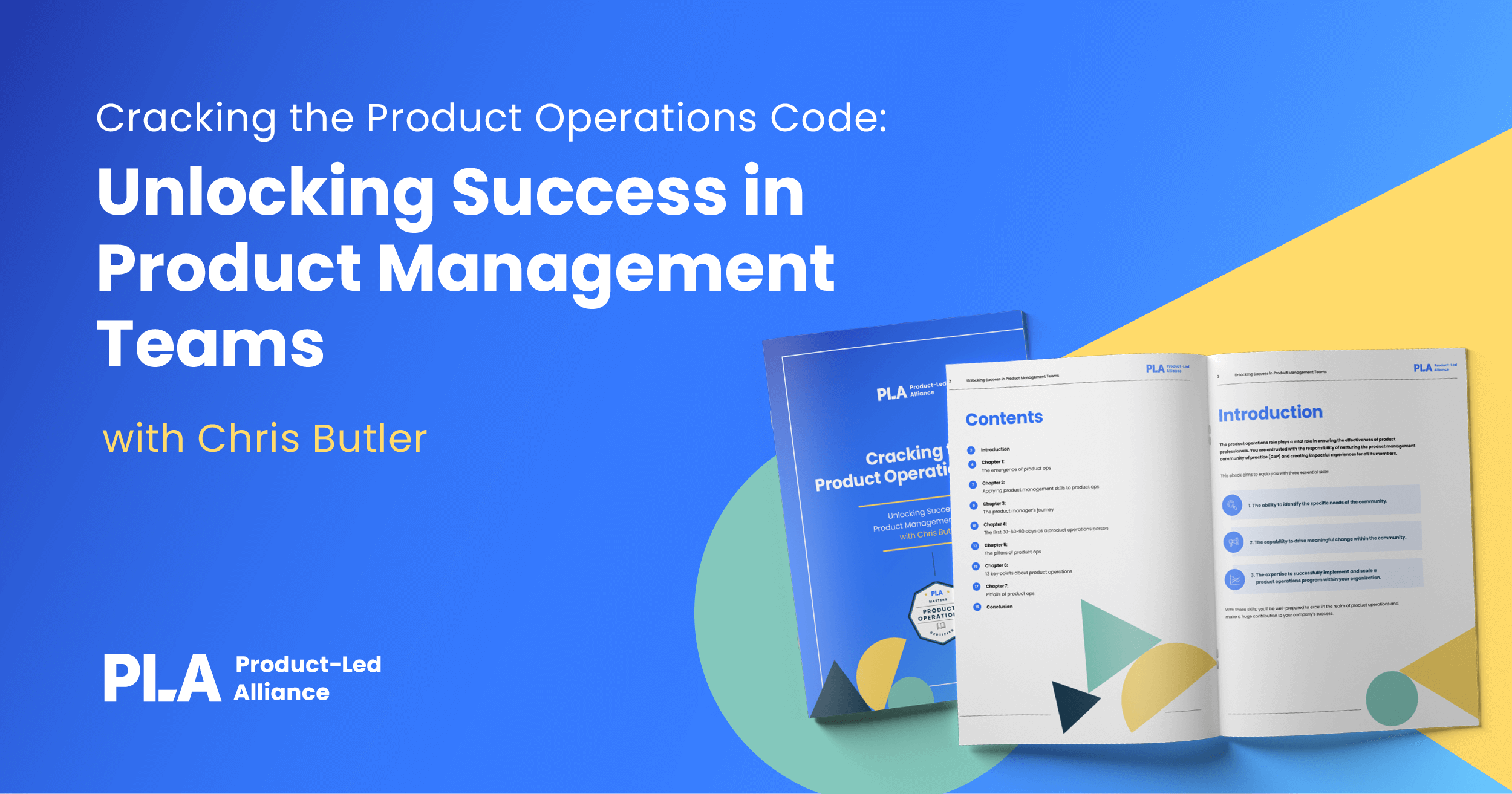Dispelling some of the myths around the role of product operations.
This is from my perspective and other product operations teams may operate differently.
Myth 1: We focus on product management only
While the product operations discipline does have the word ‘product’ in it we need to remember that product management is not the only player in the development of products.
An effective product operations function will be looking across the whole product development lifecycle. From how teams are aligning on strategic priorities all the way to how product teams collaborate on content production, for example.
Product design, customer research, product analytics, engineering, content designers, and even business stakeholders impact the product development lifecycle. Product operations needs to cover all these disciplines at different times depending on the organizational challenges, strategic priorities and general needs identified.
Myth 2: We must have product management experience
Given the above, it would actually be incredibly restricting to only have product management experience. The best product operations teams will have a varied background and strong experience in all aspects of product development.
Product operations people need to know what good looks like, they need to be able to highlight challenges and support people to change behavior if required. They can’t be expected to have experience in every role. Instead, they need to have a deep understanding of what those roles do and what their varied challenges might be.
Many of the traits of a strong product management would benefit an operations team of course, but product management is not the one role to rule them all.
Myth 3: We tell people how to work and what to do
I’ve often explained the role of product operations as focusing on “how our teams work over what they work on” and while this still holds true it doesn’t give the full picture, which can be damaging.
We do focus on the ‘how’ vs the ‘what’ but that doesn’t mean that we define processes and then inflict them on product teams. We should however be focused on how effective and efficient our teams are, rather than being focused on customer outcomes, business goals and the things our people are building to achieve them.
How does that look in reality? Good product operations teams should be giving teams the data, analysis and insights into how they might amplify the good practices they’ve fostered and change any behavior that is causing them problems. The teams themselves are the ones that should be introspective and employing a continuous improvement mindset.
Product teams should be asking themselves how they might solve some of their own challenges and how they can improve. Product operations is a pull function, not a push function. Teams should reach out for support because they want to improve, rather than product operations pushing themselves into a space and making changes.

Myth 4: We will fix things for people without their support
While product operations teams can be proactive when they identify broad challenges, teams really do need to want to change.
Product operations can hold up the mirror to how teams are operating and they of course can provide thought leadership. This can be in the form of analysis or broad insight around how other teams in the organization are operating. But the most effective way for this to happen is if the team themselves have identified a need and have a continuous improvement mindset.
It does come down to those teams to reach out for help and to start by helping themselves. Nothing will be solved by an outside entity enforcing changes unopposed. Product operations will give all the support that is needed, if there is a willingness to improve.
Myth 5: We focus on the same challenges at every organization
Just as every organization is different, the challenges they face are also vast and varied. This is dependent on business maturity, organizational scale, growth strategy, industry, and many more factors.
Generally, product operations will be looking at how the product organization operates and how they can support any improvements to efficiency and effectiveness. How that manifests itself in both day-to-day work and the longer-term strategy of the operations team will be impacted by the needs of the organization at any given time.
Some organizations might be employing product operations (whether rightly or wrongly) to fill the gaps where product leadership is less mature or lacking capability. Some are hired for their change management expertise and others might be hired for portfolio management. I’ve heard of some teams looking at strategic alignment while others manage software and hardware for their teams. Often I’ve heard product telemetry or refining customer support processes as a key focus for product operations.
Over time and with the changing needs of the organization the product operations team might have to shift between these different areas. As the product organization matures or gains new capabilities through hiring, the team might be able to step away and move to new and more pressing concerns.

Myth 6: We operate on one level within the product organization
Along with the changing needs of the product organization between companies, there are also their changing needs across time. In our case over the past year, with the changing needs of the organization and limited team size, our product operations team has been operating up and down the various levels.
This can mean that product teams might not feel the support of product operations simply as the latter are working with product leadership more closely and often. A good product operations will be able to adapt to the environment and work at the level that drives the most impact.
For example, during 2021 we went through an organizational transformation and a change to our annual planning process. Our team worked more closely with our VP of product and product directors over the course of six to nine months to support these changes and less with the product managers in the team.
Due to our limited team size and the need at the time being with product leadership, rather than with product teams, the perception of our team could be that we weren’t achieving what was expected at that level. The invisible work done is hard to make visible when teams believe they understand what the purpose of product operations is already.
What impact do these myths have?
These are just a few of the myths surrounding product operations I’ve seen over the past few years and there is probably many more. It’s also to be expected as the growth of the function intensifies and leadership teams are starting to be interested and question how this might improve their organization.
However, these myths can still have a negative impact. We’re still seeing today many job advertisements with product operations in the title that actually appear to be another role completely. Those roles are still valuable of course, but lumping together roles that don’t have a specific place in the organization into the same bucket does a disservice to the value of having a product operations team and causes overall confusion.
The most significant impact is that the internal perception of the value of the product operations team is never fully recognized. Teams and individuals might not know how to engage or collaborate with them, their invisible work remains invisible and the perception of the teams has become reality. This is a very challenging place to be and the true rewards of having a product operations team will never be gained.
For the product operations team, it is imperative that they dispel these myths, either directly or indirectly, through the work they do and how they promote themselves both internally and externally. This can be time-consuming but the benefits should outweigh the effort.




 Follow us on LinkedIn
Follow us on LinkedIn




